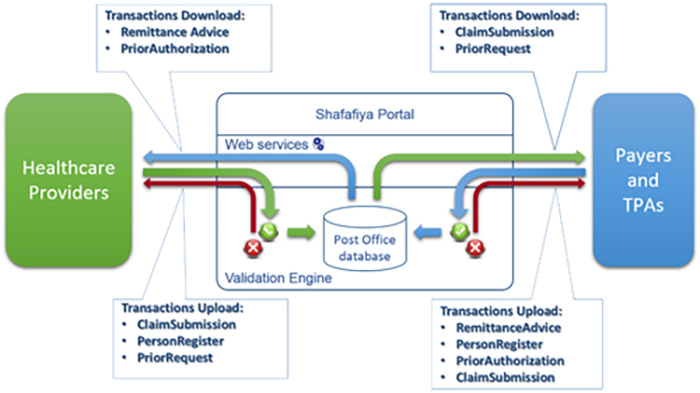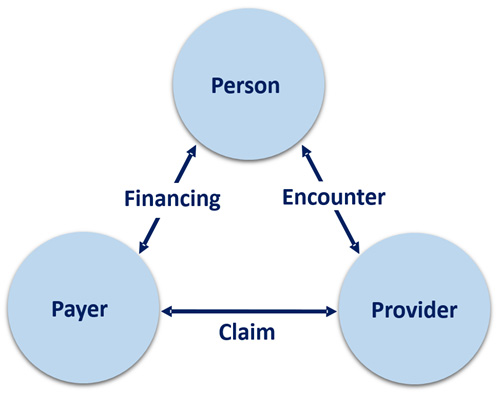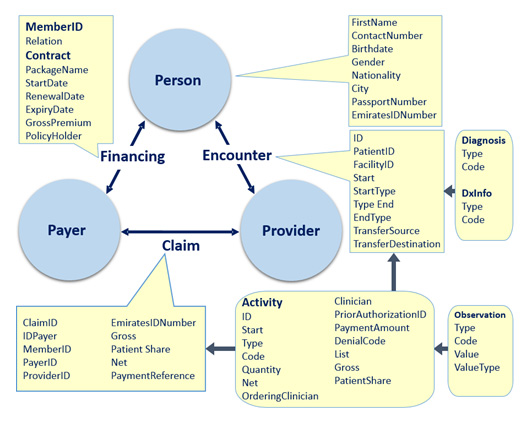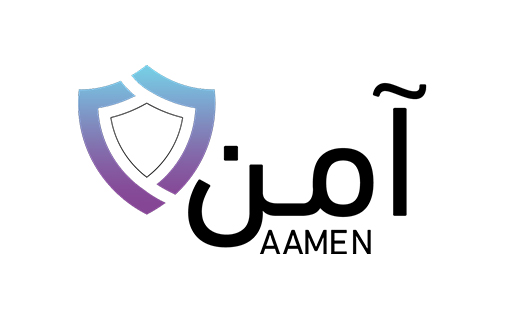Shafafiya
Shafafiya portal
Shafafiya portal contains the key standards that govern how healthcare information is exchanged and used in accordance with the Regulator Policy Manual chapter VIII Data Management, and hosts the information exchange. Documents published here describe the standard language used to exchange data (codes, licenses, etc.) as well as technical specifications of related data exchange systems.
Accurate use of common language is very important for clarity and efficiency of communications. The standards for data exchange within the Abu Dhabi healthcare system are defined in the data dictionary page of the portal. Any electronic transactions between Healthcare Entities need to be structured and exchanged accordingly.
DOH continuously develops data exchange standards for Abu Dhabi Health Sector to ensure that the common language is easy to understand yet accurate. All changes to the data exchange standards are announced at Notices. All Abu Dhabi Healthcare Entities are required to monitor this page to ensure their systems are up-to-date with the standards.
Shafafiya Post Office
Besides providing definitions for the Data Standards, Shafafiya is also the Data Exchange software system that allows the movement of the data. DOH provides web services for Healthcare partners to exchange information securely. This is called the Shafafiya Post Office

Key concepts :
Healthcare systems help individual Persons obtain better health. A person can be a Patient who has an Encounter with a Provider. The Provider then claims some or all of the charges from the Payer. The payer in turn collects insurance premiums (Financing) from its members, who are individual persons. The relationship between these key concepts is shown below.

When a patient has an encounter with a provider, the provider needs to know what was done with the patient – an Activity such as a laboratory test – to be able to charge for it. Activities may or may not lead to an Observation, such as the result of a laboratory test. The Activity and Observation concepts are both depicted in the Figure below, together with a summary of all the data elements within each concept.

Definitions
Encounter
An Encounter starts when a Patient is first brought under the care of a responsible healthcare professional and ends when the Patient stops being under the care of a responsible healthcare professional at the healthcare provider.
Example 1 | A Patient has an accident at home and is driven by his family to the emergency room of a local hospital. After triage in the emergency room, the Patient is admitted to a ward and has surgery a few hours later. After five days the Patient is discharged home. The time period from being registered in the emergency room until discharge from the hospital is considered to be one Encounter.
Example 2 | A Patient has an outpatient consultation during which she undergoes a lab test. Four days later she has an x-ray, and a further two days later a follow-up appointment with a doctor. The Patient has had three Encounters: 1- outpatient consultation + lab test, 2- X-ray, 3-follow-up appointment.
Example 3 | A Patient has an outpatient consultation, during which he undergoes a lab test and an x-ray. This Patient has only one Encounter: outpatient consultation + lab test + x-ray
Episode
An Episode is an inpatient Encounter or a set of outpatient Encounters of the same patient (identified by MemberID) with the same principal diagnosis that starts with a consultation and includes Encounters linked to the orders of the clinician (Ordering Clinician) responsible for the consultation. Each consultation starts a new Episode. The Episode is a calculated data element used for analysis, it is not part of the data exchanged in electronic transactions.
Claim
A claim is an original request for payment for health services provided to a single Patient. Claims are generally linked to Patients who are covered by health insurance. For the purposes of this guidance, any invoices made out to non-insured Patients should also be considered as Claims.
Activity
An Activity is a clinical service, intervention, medication or material provided to the Patient on orders a responsible clinician, such as: drugs, consultations, investigations and surgical procedures. Some types of activities are used to describe multiple different services, such as room and board, per diems, consumables, DRGs, etc.
Example: A normal outpatient visit might include a consultation with the doctor (one activity), 2 lab tests (each test will have its own activity), an X-ray investigation (one activity) and 2 drugs dispensed in the facility internal pharmacy (two activities). In total there are 6 activities.
Example: In an outpatient visit clinician prescribes to the patient an MRI scan, which gets done only 2 weeks later in a different healthcare facility. In this case there will be two claims, one with a single activity for the clinician consultation, and a separate claim with one activity for the MRI. In both claims the Diagnosis is the same and the Ordering Clinician is the same, though the performing Clinician could be different for the MRI activity. Note: these two Claims represent a single Episode for the purpose of statistics.
Example: An Inpatient claim will include all the procedures performed as an activity, as well as each drug dispensed during the stay, given on different days and times, the doctor’s consultation at the bedside, as well as the room and board corresponding to each day of the stay, and all consumables used. It will also include a single DRG-type activity that will include claimed amount for the whole case.
Observation
An Observation is additional information attached to an Activity. Observations can be used to describe the result of Activity, such as a diagnostic test, lab work, etc. An Activity may have multiple Observations, but an Observation can only be linked to one Activity. In the simplest form for example, a blood pressure test (the Activity) results in a blood pressure reading (the Observation).
Laboratory observations, also known as findings, are essential analytical data elements for disease management, outcome analysis and other studies.
Requirements for reporting of observations can be found under Standards>>Reporting requirements>>Routine reporting
How to use the Post Office
- Healthcare entities (senders) upload XML formatted files to shafafiya post office for other organizations to collect them (receivers).
- This website describes the Data dictionary and format of the files.
- Each file has a SenderID and a ReceiverID. Submitted files will only be seen by both organizations and by DOH, but by nobody else
- Each partner has an obligation to monitor the Post Office to see if they have new submissions sent to them to download
- The Post Office only uses Web-services to communicate: there is no webpage or software from DOH to upload or download files
- It is the responsibility of the users to secure a software to use this webservices, either by internal development or from a third party. This can be through the:
- Hospital Information system or billing software
- Pharmacy system
- Insurance company system
- XML file upload tool that connects to shafafiya
- DOH does not regulate particular software solutions used by healthcare entities






 For an optimal experience please
For an optimal experience please